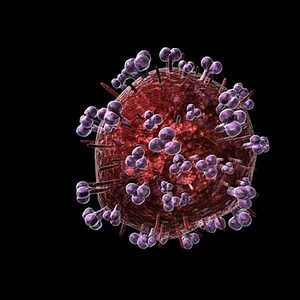
Researchers of Texas A&M University have managed to develop a synthetic compound capable of breaking apart the AIDS inducing virus before it has the chance to infect healthy cells. While the compound doesn’t cure HIV, it may provide effective means of preventing infection.
Dubbed, “PD 404,182″, the compound works by quickly ripping and dissolving the virus before it has the chance to spread into the organism by acting from inside the virus itself. This way the HIV virus isn’t able to alter its protein levels, and thus bolster its resistance which would make it difficult to treat. Since the compound isn’t in contact with the virus via its membrane, it doesn’t affect healthy human cells as well, which have a similar membrane to the HIV virus. Otherwise, the compound would kill human cells, as well as virus cells.
“This is a virucidal small-molecule compound, meaning that it has the ability to kill a virus; in this case that virus is HIV,” Zhilei Chen, assistant professor of chemical engineering says. “Basically, it acts by breaking the virus open. We found that when HIV comes in contact with this compound, it breaks open and loses its genetic material.
“In a sense, the virus ‘dissolves,’ and its RNA becomes exposed. Since RNA is pretty unstable, once it is exposed it’s gone very quickly and the virus is rendered non-infectious.”
While not a cure for HIV, Chen believes it could act instead as a preventive solution, especially when applied on the vaginal canal in the form of a topical gel.
Remarkably enough, Chen and his team weren’t actually seeking to develop an anti-HIV compound. In the beginning the researchers were actually looking for way to develop therapies targeting hepatitis C virus. The scientists screened a myriad of molecular compounds, in search of those that could block aspects of the HCV life cycle. What they found was that not only the PD 404, 182 was an HCV inhibitor, but that worked on lentiviruses, which also includes HIV.
“We believe PD 404,182 acts through a unique and important mechanism,” Chen notes. “Most of the known virucidal compounds interact with the virus membrane, but our compound does not appear to interact with the virus membrane. Instead, it bypasses interaction with the membrane and still compromises the structural integrity of the virus.”
The study was published in the journal Antimicrobial Agents and Chemotherapy.


